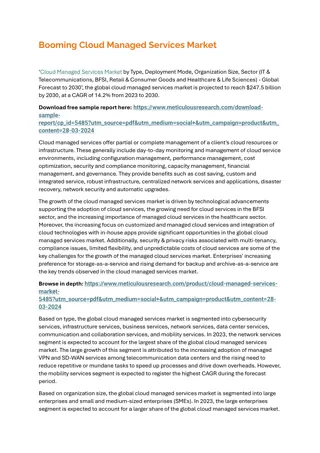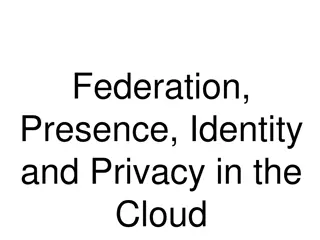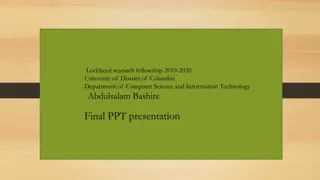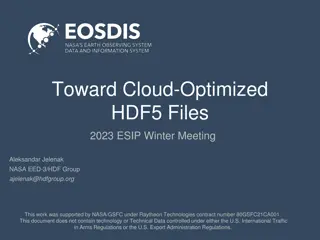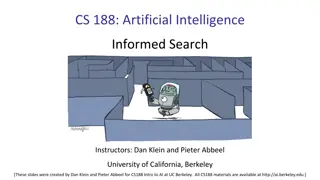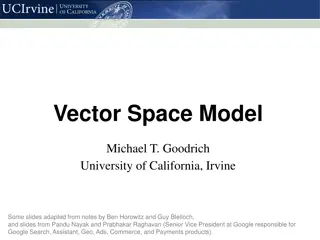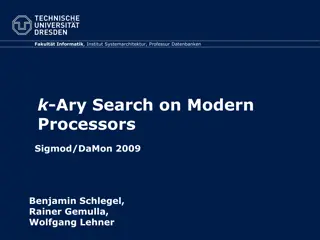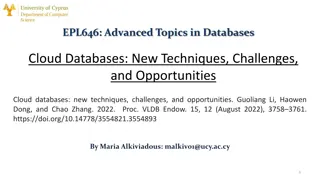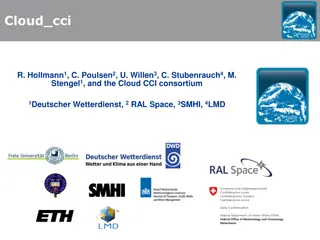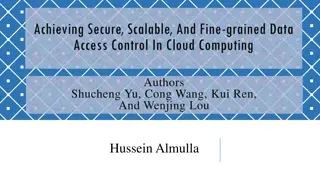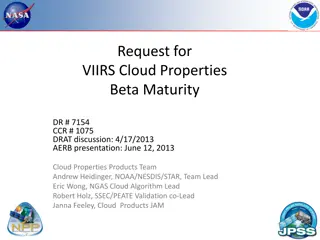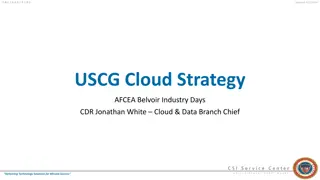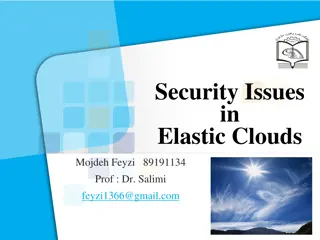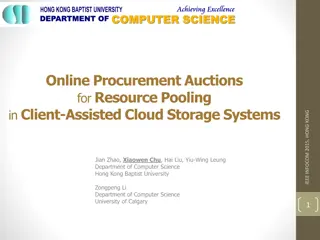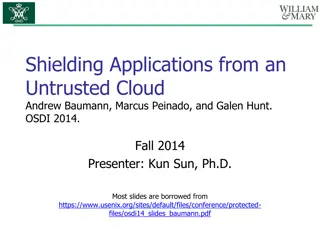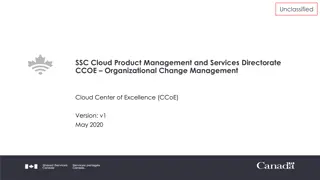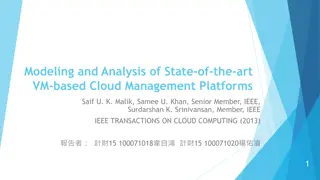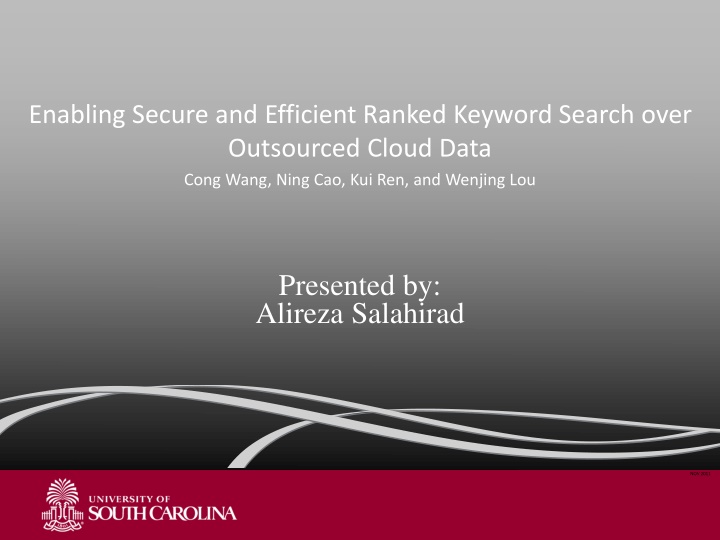
Secure Ranked Keyword Search over Cloud Data
This research focuses on enabling secure and efficient ranked keyword search over outsourced cloud data. It addresses the importance of cloud computing, security concerns, encryption for data privacy, and the significance of keyword-based search on demanded data, all while ensuring data remains secure in a cloud environment.
Download Presentation

Please find below an Image/Link to download the presentation.
The content on the website is provided AS IS for your information and personal use only. It may not be sold, licensed, or shared on other websites without obtaining consent from the author. If you encounter any issues during the download, it is possible that the publisher has removed the file from their server.
You are allowed to download the files provided on this website for personal or commercial use, subject to the condition that they are used lawfully. All files are the property of their respective owners.
The content on the website is provided AS IS for your information and personal use only. It may not be sold, licensed, or shared on other websites without obtaining consent from the author.
E N D
Presentation Transcript
Enabling Secure and Efficient Ranked Keyword Search over Outsourced Cloud Data Cong Wang, Ning Cao, Kui Ren, and Wenjing Lou Presented by: Alireza Salahirad NOV 2011
Outline : 1, Introduction 2, Problem Statement 3, The Definition and Basic Scheme 4, Efficient Ranked Searchable Symmetric Encryption Scheme 5, Security Analysis 6, Further Enhancement and Investigations 7, Performance Analysis 8, Related Work 9, Conclusion NOV 2011
1,Introduction NOV 2011
Cloud Computing is Important! Due to the rapid expansion of data, the data owners tend to store their data into the cloud to release the burden of data storage and maintenance. NOV 2011
Security in Cloud Servers is Important Too! The cloud customers and the cloud server are not in the same trusted domain, the outsourced data may be under the exposure to the risk. NOV 2011
Sensitive data have to be encrypted prior to outsourcing for data privacy and combating unsolicited accesses. NOV 2011
One of The Most Important Computation on Cloud Servers is Keyword-Based Search on a Demanded Data NOV 2011
Such keyword search technique allows users to selectively retrieve files of interest and has been widely applied in plaintext search scenarios NOV 2011
In this research authors want the server search on encrypted data NOV 2011
Traditional searchable encryption schemes support only conventional Boolean keyword search, without capturing any relevance of the files in the search result. NOV 2011
lacking of effective mechanisms to ensure the file retrieval accuracy is a significant drawback of existing searchable encryption NOV 2011
Therefore NOV 2011
How to enable a searchable encryption system with support of secure ranked search is the problem tackled in this paper. NOV 2011
2, Problem Statement NOV 2011
Data owner has a collection of n data files C=(F1,F2, ,Fn) that he wants to outsource on the cloud server in encrypted form. NOV 2011
Data owner will first build a secure searchable index I from a set of m distinct keywords W=(w1, w2, , wm) Extracted from the file collection C, and store both the index I and the encrypted file collection C on the cloud server. NOV 2011
To search the file collection for a given keyword w: An authorized user generates and submits a search request in a secret form, a trapdoor Tw of the keyword w, to the cloud server. Upon receiving the search request Tw, the cloud server is responsible to search the index I and return the corresponding set of files to the user. NOV 2011
To reduce bandwidth, the user may send an optional value k along with the trapdoor Tw and cloud server only sends back the top-k most relevant files to the user s interested keyword w. NOV 2011
The authors consider that server is an honest-but-curious Honest: Server correctly follows the designated protocol specification. Curious: server is curious to infer and analyze the message flow received during the protocol so as to learn additional information. NOV 2011
Notation NOV 2011
Cthe file collection to be outsourced, denoted as a set of n data files C = (F1, F2, , Fn). W: the distinct keywords extracted from file collection C, denoted as a set of m words W = (w1,w2, ,wm). id(Fj): the identifier of file Fj that can help uniquely locate the actual file. I: the index built from the file collection, including a set of posting lists {I(wi)}. Twi: the trapdoor generated by a user as a search request of keyword wi. F(wi): the set of identifiers of files in C that contain keyword wi. Ni: the number of files containing the keyword wi and Ni = |F(wi)|. NOV 2011
Ranking function: In information retrieval, a ranking function is used to calculate relevance scores of matching files to a given search request. NOV 2011
They use this general formula as their reference: 1 ? ??) Score(Q, Fd) = ??. 1 + ?? ??,? .ln(1 + ? ? Q denotes the searched keywords; fd,t denotes the term frequency(the number of times a given term or keyword appears within a file) of term t in file Fd; ft denotes the number of files that contain term t; N denotes the total number of files in the collection; and |Fd| is the length of file Fd, obtained by counting the number of indexed terms, functioning as the normalization factor. NOV 2011
3, The Definitions and Basic Scheme NOV 2011
Access pattern refers to the outcome of the search result, i.e., which files have been retrieved. In order to achieve more efficient solutions, their scheme resort to the weakened security guarantee, i.e., revealing the access pattern and search pattern but nothing else. They leak the relative relevance order but not the relevance score. NOV 2011
Definitions and Framework of ranked searchable symmetric encryption (RSSE) System NOV 2011
Their ranked searchable encryption system can be constructed from: (KeyGen, BuildIndex, TrapdoorGen, SearchIndex) in two phases: Setup and Retrieval NOV 2011
Setup. The data owner initializes the public and secret parameters of the system by executing KeyGen, and pre-processes the data file collection C by using BuildIndex to generate the searchable index from the unique words extracted from C. The owner then encrypts the data file collection C, and publishes the index including the keyword frequency-based relevance scores in some encrypted form, together with the encrypted collection C to the Cloud. As part of Setup phase, the data owner also needs to distribute the necessary secret parameters (in their case, the trapdoor generation key) to a group of authorized users by employing off-the-shelf public key cryptography or more efficient primitive such as broadcast encryption. NOV 2011
Retrieval. The user uses TrapdoorGen to generate a secure trapdoor corresponding to his interested keyword, and submits it to the cloud server. Upon receiving the trapdoor, the cloud server will derive a list of matched file IDs and their corresponding encrypted relevance scores by searching the index via SearchIndex. The matched files should be sent back in a ranked sequence based on the relevance scores. However, the server should learn nothing or little beyond the order of the relevance scores. NOV 2011
In this paper they focus on single keyword search. Thus, search results can be accurately ranked based only on 1 Score(t , Fd) = ??.(1+Ln fd,t) t denotes the searched keyword; fd,t denotes the term frequency(the number of times a given term or keyword appears within a file). |Fd| is the length of file Fd, obtained by counting the number of indexed terms, functioning as the normalization factor. NOV 2011
Data owner can keep a record of these two values and precalculate the relevance score, which introduces little overhead regarding to the index building. NOV 2011
Before giving their main result, they first start with a straightforward yet ideal scheme. NOV 2011
The Basic Scheme NOV 2011
In the Setup phase NOV 2011
In the Retrieval phase NOV 2011
The user gets the ranked results without letting cloud server learn any additional information more than the access pattern and search pattern. NOV 2011
In the basic scheme, the ranking is done on the user side, which may bring in huge post processing overhead. Moreover, sending back all the files consumes large undesirable bandwidth. NOV 2011
One possible way to reduce the communication overhead is that server first sends back all the valid entries , where 1 j Ni. User then decrypts the relevance score and sends cloud server another request to retrieve the most relevant files (top-k retrieval) by the rank-ordered decrypted scores. NOV 2011
As the size of valid entries far less than the corresponding files, significant amount of bandwidth is expected to be saved, as long as user does not retrieve all the matching files. is NOV 2011
However, the most obvious disadvantage is the two round-trip time for each search request of every user. Also note that in this way, server still learns nothing about the value of relevance scores, but it knows the requested files are more relevant than the unrequested ones, which inevitably leaks more information than the access pattern and search pattern. NOV 2011
Afterward, they resort to the newly developed cryptographic Primitive: Order Preserving Symmetric Encryption to achieve more practical performance. NOV 2011
Note that by resorting to Order Preserving Symmetric Encryption (OPSE) , the security guarantee of RSSE is inherently weakened compared to SSE, since now the relevance order is known by the server . However, this is the information they want to trade off for efficient RSSE NOV 2011
The OPSE is a deterministic encryption scheme, so if not treated appropriately, will still leak a lot of information as any deterministic encryption scheme will do. NOV 2011
If someone use OPSE directly over sampled relevance scores, the resulting ciphertext shall share exactly the same distribution as the relevance score in below figure. NOV 2011
Thus, with certain background information on the file collection, such as knowing it contains only technical research papers, the adversary may be able to reverse engineer the keyword network directly from the encrypted score distribution without actually breaking the trapdoor construction, nor does the adversary need to break the OPSE. NOV 2011
In order to reduce the amount of information leakage from the deterministic property, an one-to-many OPSE scheme is thus desired, which can flatten or obfuscate the original relevance score distribution, increase its randomness, and still preserve the plaintext order. NOV 2011
To do so, they first briefly review the encryption process of original deterministic OPSE, where a plaintext m in domain D is always mapped to the same random-sized non overlapping interval bucket in range R, determined by a keyed binary search over the range R and the result of a random hypergeometric probability distribution (HGD) sampling function. A ciphertext c is then chosen within the bucket by using m as the seed for some random selection function. NOV 2011


